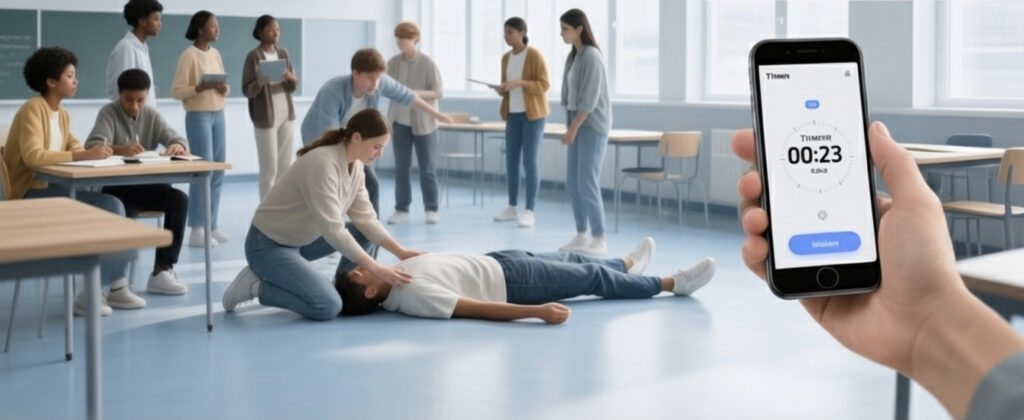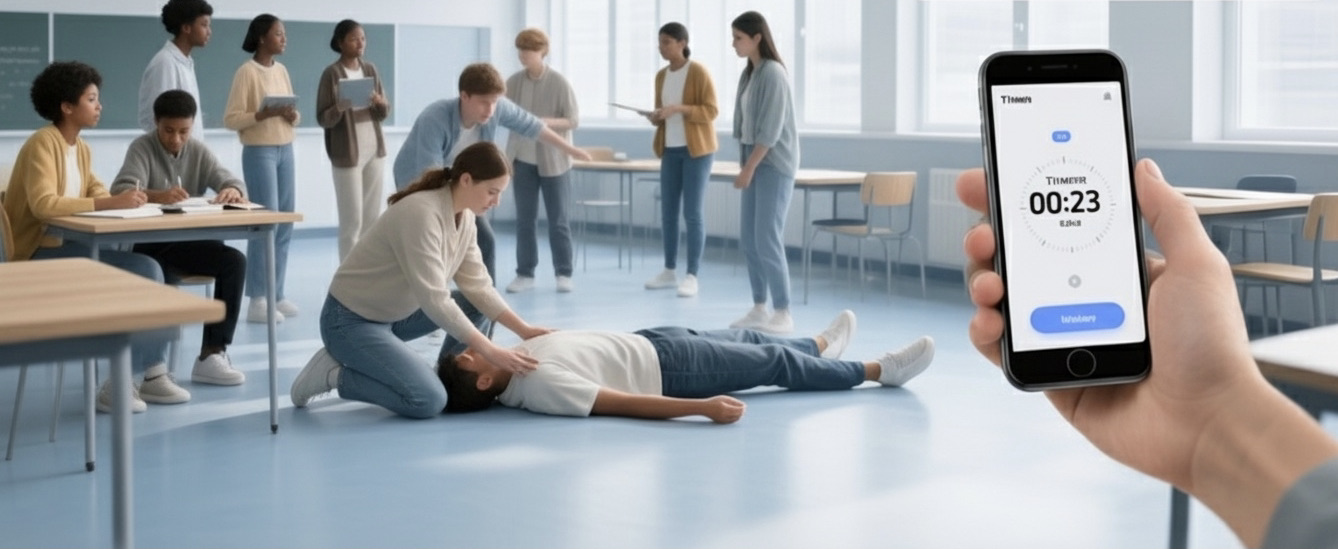Symptoms of a Seizure
A person having a seizure may suddenly lose control of their body or awareness. Common signs include:
Shaking or jerking movements of the arms and legs
Stiffening of the body
Loss of consciousness or responsiveness
Confusion or disorientation after the seizure
Staring or unresponsiveness
Strange sensations, such as tingling or unusual smells
Temporary loss of bladder or bowel control
Seizures usually last a few seconds to a few minutes. While
they can be frightening to witness, most seizures are not
life-threatening.

Quick Support Guide
1 – Stay calm and reassure
2- Protect from injury
3 – Do NOT put anything in their mouth
4 – Time the seizure
5 – Monitor and support

Stay Calm and Reassure
It is important to remain calm when someone is having a seizure. Your presence can be reassuring, and staying nearby ensures you can respond quickly if they need help. Speak softly and avoid crowding them, letting them know they are not alone.
Protect from Injury
During a seizure, people may move uncontrollably. Make sure the area around them is safe by removing sharp or hard objects. You can place
a soft item under their head, such as
a folded jacket, to prevent injury, but do not try to hold them down.
Never Put Anything In Their Mouth
Never put your hands or any object in the person’s mouth. This can cause choking or damage their teeth or jaw. Your main focus should be on keeping them safe from harm.
Time the Seizure
Most seizures last only a few minutes. Keep track of how long it lasts, because a seizure lasting longer than 5 minutes, or multiple seizures without full recovery in between, is an emergency and requires immediate medical attention.
Monitor and Support
Once the seizure stops, help the person into the recovery postition. Speak calmly, reassure them, and give them time to recover fully. They may be confused, tired, or emotional, so stay with them until they are alert and ready to move safely.

Call 999 or Seek Medical Help If:
You should call emergency services (999) if any of the following occur during or after a seizure:
- Seizure lasts longer than 5 minutes – This can be a life-threatening condition called status epilepticus.
- Multiple seizures occur without full recovery in between – This can be dangerous and requires immediate medical attention.
- Difficulty breathing or turning blue – Any trouble breathing or signs of lack of oxygen are an emergency.
- Serious injury occurs during the seizure – Head injury, broken bones, or heavy bleeding needs urgent care.
- The person does not regain consciousness or is unusually confused afterward – Prolonged unconsciousness or disorientation is a warning sign.
- First-time seizure – Even if it stops on its own, a first seizure should always be evaluated by a medical professional.
- Seizure happens in water or while driving – Risk of drowning or serious injury is high.
Want to know more?
Book onto one of our open courses or contact our sales team to discuss onsite training for your team.

